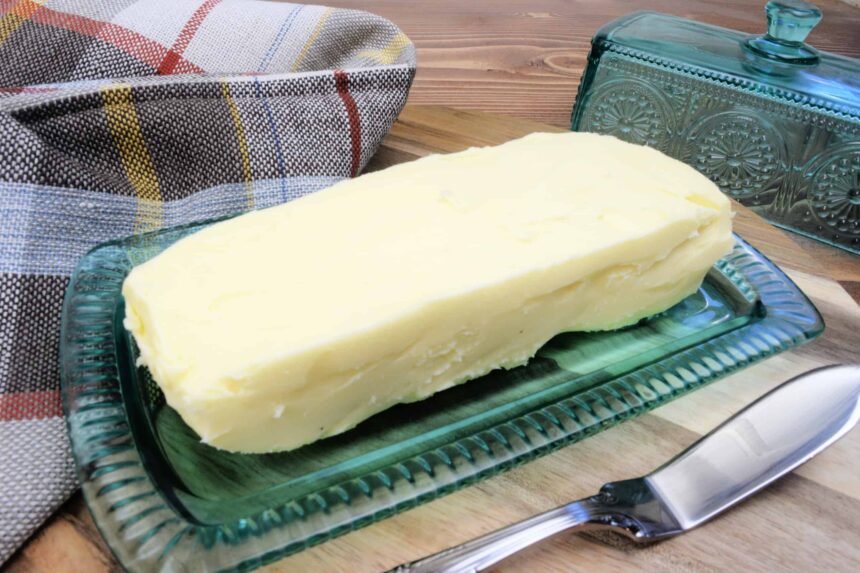Butter has been a staple in traditional kitchens for centuries. Long before the invention of modern appliances, people created butter through a simple but rewarding process: hand churning. If you have ever wondered how to make butter from raw milk by hand churning, this guide will walk you through every step. We’ll also explore why raw milk is special, the traditional techniques used, and where you can buy raw butter today if you prefer not to make it yourself.
Why Choose Raw Milk for Butter?
Raw milk comes straight from the cow, goat, or buffalo without going through pasteurization or homogenization. This means it retains its beneficial enzymes, probiotics, and nutrients. When you choose raw milk for butter making, you’re not only embracing a traditional craft but also ensuring you get maximum flavor and nutrition.
Many people claim that butter made from raw milk tastes richer and carries the essence of the pasture where the cows graze. The unique aroma, creamy texture, and golden-yellow color set it apart from store-bought butter.
How to Separate Cream from Raw Milk
The first step in learning how to make butter from raw milk is separating the cream. Here’s how:
-
Pour fresh raw milk into a wide container (glass or stainless steel works best).
-
Refrigerate for 12–24 hours. During this time, the cream naturally rises to the top.
-
Carefully skim the thick cream layer with a spoon or ladle into another bowl.
-
You now have raw cream, the key ingredient for your butter-making process.
This separation is only possible because raw milk is not homogenized. In homogenized milk, fat particles are broken and evenly distributed, so they don’t rise naturally. This is why raw milk is perfect for making butter.
How Do You Make Butter from Raw Milk by Hand Churning?
Traditional butter making doesn’t require electricity or modern churners. Here’s a simple step-by-step process:
-
Gather Cream – Collect enough cream from your raw milk (around 2 cups of cream for 1 stick of butter).
-
Let It Rest – Bring cream to room temperature for smoother churning. Cold cream takes much longer to separate.
-
Choose Your Container – In the past, wooden churns were used, but you can use a large glass jar with a lid or even a clay pot.
-
Begin Churning – Shake the jar or stir vigorously with a wooden spoon or whisk. This agitation breaks down the fat globules in the cream.
-
Watch for Clumps – After 10–15 minutes of churning, you’ll see the cream begin to separate into butter solids and buttermilk.
-
Drain Buttermilk – Once butter clumps form, pour out the liquid (this is buttermilk, which you can drink or use in baking).
-
Wash the Butter – Rinse the butter under cold water several times to remove excess buttermilk. This prevents spoilage.
-
Knead and Salt – Knead with clean hands or a spatula until smooth. Add a pinch of salt if you like.
-
Store – Place your homemade raw milk butter in a clean glass jar or wrap in parchment paper. Store in the fridge.
This manual process can feel labor-intensive, but that’s part of the charm. It’s a hands-on experience that connects you with food preparation traditions stretching back hundreds of years.
The Taste and Texture of Raw Milk Butter
Butter made from raw milk has a distinct golden tint due to naturally occurring beta-carotene in cow’s milk. Its taste is noticeably fresher, creamier, and slightly tangier compared to commercial butter. The aroma is also unique—some say it even reflects the seasonal diet of the animals producing the milk.
Health Benefits of Raw Milk Butter
Many traditional-food enthusiasts believe raw butter is nutritionally superior to processed butter. While modern research is divided, here are several potential benefits:
-
Rich in vitamins: Contains A, D, E, and K2 in highly absorbable forms.
-
Healthy fats: Provides conjugated linoleic acid (CLA) and butyrate, both linked to gut and metabolic health.
-
Enzyme support: Retains natural lipases for digestion.
-
Less processed: No heating, bleaching, or homogenization alters the natural structure.
However, it’s important to remember that raw dairy may carry bacteria if not sourced from a clean, reliable farm. Always choose trusted suppliers.
Variations in Churning Methods
Depending on your tools and energy, there are multiple traditional ways to churn butter:
-
Clay pot stirring – Using a long wooden spoon in a clay pot is common in rural households.
-
Glass jar shaking – An easy method, suitable for small batches.
-
Wooden churners – The old-fashioned plunger-style churn remains popular on homesteads.
-
Hand whisk – A modern but manual approach using a balloon whisk.
Each method works on the same principle—agitation that forces fat molecules to cluster together into butter.
How to Make Raw Milk Butter in Bulk
If you want to make larger quantities, consider these steps:
-
Collect cream for several days (store in the fridge).
-
Once you have enough, let it sit at room temperature before churning.
-
Use a hand-crank churner which allows you to process larger amounts more easily.
This way, you can stock up and even freeze homemade raw butter for months.
How to Store and Preserve Raw Butter
Because raw butter has no preservatives, proper storage is key:
-
Short-term: Keep in the refrigerator for up to 2 weeks.
-
Long-term: Freeze in blocks. It can last 6–9 months frozen.
-
Salted butter lasts longer, as salt acts as a natural preservative.
Always cover butter well to prevent it from absorbing fridge odors.
Where to Buy Raw Butter
If you don’t have the time or resources to make your own, you may be wondering where to buy raw butter. Depending on local laws, raw dairy can be harder to find since many countries regulate raw milk sales.
-
Farmers’ markets: Some small dairy farms sell raw butter directly.
-
Specialty organic stores: Certain stores may carry raw dairy.
-
Local farm deliveries: Many raw milk farmers also deliver raw cream and butter subscriptions.
For information about safe sourcing and regulations, you can consult resources like the Weston A. Price Foundation, which advocates for traditional nutrient-dense foods and provides farm directories.
Common Mistakes to Avoid
-
Using homogenized milk instead of raw milk (no cream will separate).
-
Churning very cold cream (slows the process).
-
Forgetting to wash the butter thoroughly (shortens shelf life).
-
Leaving too much buttermilk behind (causes sour taste and spoilage).
By being mindful of these details, your butter-making experience will be both successful and rewarding.
Read More: How to Make Raw Milk Butter Without Special Equipment
Conclusion
Learning how to make butter from raw milk by hand churning is more than just a kitchen skill—it’s a connection to history, tradition, and wholesome nutrition. Whether you try the classic jar-shaking method or invest in a small wooden churn, you’ll discover the satisfaction of creating real, flavorful butter with your own hands.
For those who prefer convenience, understanding how to make raw milk butter still gives you knowledge to seek out the best-quality butter at the market. Whether making or buying, raw butter offers a richness and authenticity you’ll never find in mass-produced alternatives.









